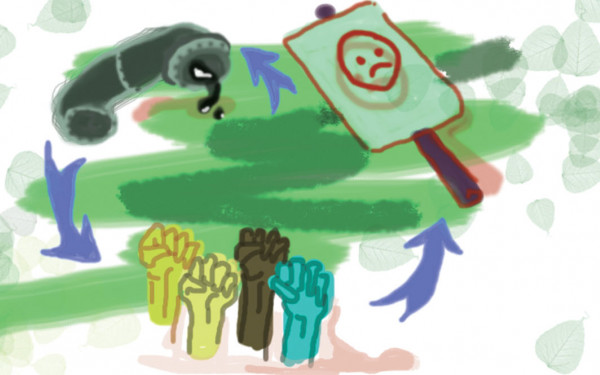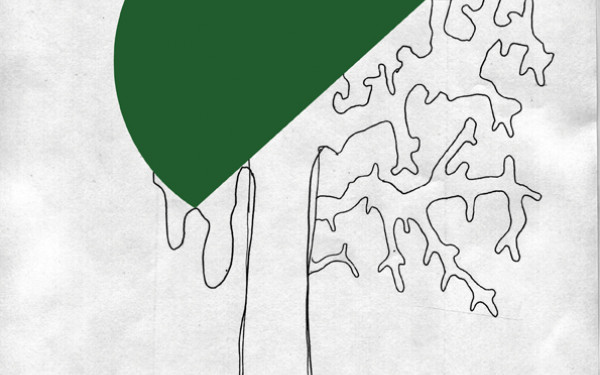Human Nature vs. Mother Nature: Is There a Victor?
Make Like the Lorax and Fight for All Beings’ Right to Life.
If you were told that the price of being human is to be the world’s greatest enemy, would you be shocked, confused, offended, or curious?
26] Then God said, “Let us make mankind in our image, in our likeness, so that they may rule over the fish in the sea and the birds in the sky, over the livestock and all the wild animals, and over all the creatures that move along the ground.”
[27] So God created mankind in his own image, in the image of God he created them; male and female he created them.
[28] God blessed them and said to them, “Be fruitful and increase in number; fill the earth and subdue it. Rule over the fish in the sea and the birds in the sky and over every living creature that moves on the ground.”
Most religious scriptures assure followers that the world was made for human dominion. Genesis 1:26-28 sticks by this, as presented by the passages above (NIV). That means that we may treat nature and its beings as we wish because the world is ours to do with as we please, right?
According to the Bible, the garden of Eden was a utopian representation of godliness and perfection that existed thousands of years ago. Sadly, this is not what our ecological climate is facing today. In fact, if we were to go by biblical scripture today, it seems as though the dominion of humankind has led to the world’s climate crisis.
Still confused? Don’t worry, I’m here to help.
Welcome to a short discourse on the interpretation of interactions between human and nonhuman animals. Take a seat and grab yourself a cup of coffee, because there is a lot to digest.
Tell me, reader: Who among us wants to destroy the world?
Now, you’re probably thinking this is a ridiculous question—ridiculous because nobody actually wishes such an ill fate upon the world. This, however, is not entirely true as we contribute to the destruction of the world every day when we put our needs before that of other life forms.
Daniel Quinn’s novel, Ishmael, best answers this. “You are captives of a civilizational system that more or less compels you to go on destroying the world in order to live […] You are captives–and you have made a captive of the world itself.” According to Quinn, we are captives of our inner god-complexes. This is what’s at stake.
Humankind has been diagnosed with a sickening disease: speciesism.
Peter Singer is one of the first to coin the term “speciesism” in his book widely considered a pillar in the animal liberation movement, Animal Liberation. He defines it as “a prejudice or attitude of bias in favour of the interests of members of one’s own species and against those of members of other species.”
Let’s take the example of pain. In order to fulfill our own needs, humans are ready to acquire resources by whatever means necessary, even if that means killing or abusing members of another species. The problem with this lies in our readiness to cause pain for the benefit of human interest.
It’s hypocritical, considering we would not willingly afflict the same pain to our kind.
As Singer says, “most human beings are speciesist in their readiness to kill other animals when they would not kill human beings.” He calls this “the sanctity of human life,” which pushes the belief that human life is sacrosanct, which is in itself speciesist.
Marion Achoulias has taught courses on cultural studies and comparative religion, with a focus on the cultural aspects of speciesism and anti-speciesist advocacy at Concordia University. An activist herself, she has volunteered at farm sanctuaries in Quebec like R&R Refuge and SAFE, taught courses, and developed teaching materials for children.
“To justify such extreme violence, we must turn a blind eye to the needs and interests of animals,” she said. “Such discrimination based on species-membership and body/cognition/ability divergence is called speciesism.”
When we consider this, one thing is clear: The dominant discriminatory ideology of speciesism is invisible to corporate and government power. Moreso, “France, Canada, even Quebec [more specifically] are among some of the most speciesist societies,” according to Carl Saucier-Bouffard, professor of Animal and Environmental Ethics at Dawson College.
There is no limit to what we as humans can do, even the most inhumane of things. To paint a picture, let’s take the concept of pain affliction on animals to the slaughterhouse.
Did you know that some species, mostly mammals and birds, react similarly if not exactly the same as humans when faced with danger? Behavioural traits include writhing, facial contortions, moaning, yelping, and appearance of fear.
Physiological traits include rise and fall in blood pressure, dilated pupils, perspiration, and many more. There is even research that suggests that animals share similar emotional traits as humans, which are located in the cerebral cortex.
“Rats display empathy, chickens enjoy play, pigs outperform three-year-old human children on cognition tests, fish have memory, bees can get depressed. Cows have personalities—while some are shy, others are playful, even
mischievous.”— Marion Achoulias
According to Achoulias, “rats display empathy, chickens enjoy play, pigs outperform three-year-old children on cognition tests, fish have memory, bees can get depressed. Cows have personalities—while some are shy, others are playful, even mischievous.”
Eighteenth-century French philosopher Voltaire’s discourse, Bêtes, makes similar remarks in liaison to Singer and Achoulias.
“There are barbarians who seize this dog, who so greatly surpasses man in fidelity and friendship, and nail him to the table and dissect him alive, to show you the mesaraic veins!” he wrote. “You discover in him all the same organs of feeling as in yourself. Answer me, mechanist, has Nature arranged all the springs of feeling in this animal to the end that he might not feel?”
The evidence is there, but we continue to turn a blind eye when nonhuman animals clearly have an interest in their quality of life and environment.Now apply these reactions to what a slaughterhouse might look, sound, or smell like. Worse; imagine being one of those creatures, who have only been bred to end up slaughtered.
Stephanie Eccles is a teaching assistant and PhD student and researcher at Concordia. An animal rights activist herself, she is a key organizer of the Montreal Animal Save Movement, which is an animal safety movement that holds vigils outside of slaughterhouses.Volailles Marvid Poultry is a slaughterhouse based in the Montreal North region. MAS organizes vigils there regularly to see the animals brought to the facility by truckloads before they are turned into produce for the food industry.
“We are currently working on ways to build solidarity with the community and slaughterhouse workers, with the intention of putting the spotlight on this egregious form of environmental neglect of Marvid’s location within Montreal,” said Eccles. Her activism in the field focuses on combining animal agriculture with socio-environmental problems.
“When the animals enter the slaughterhouse, their aliveness is a challenge to the workers who are tasked with hanging at least 20 birds per minute,” according to Eccles. “Without a doubt, extreme force, fear, and pain is inflicted during this process by the workers, but they are tasked with initiating the killing of thousands of animals a day that are actively resisting their death.”
Slaughterhouses in Quebec are relentless and reckless when it comes to killing these animals. However, it is very common for animal welfare to be neglected in Quebec, as Saucier-Bouffard suggests.“No one really inspects provincial slaughterhouses,” says Saucier-Bouffard. The problem is that there is not enough scholarly research on the subject, since most slaughterhouses are owned by private corporations, who refuse access to scholars. This forces academics to rely on federal inspectors’ reports.
Yet another problem arises. Inspectors are often spread thin, responsible for multiple facilities, which can cause poor reporting on the conditions observed. Because of this, inspectors usually focus on reporting the treatment of animals in federal slaughterhouses rather than provincial farming factories. The facts are usually based upon this type of research.
Canada’s protection laws aren’t doing enough for animals either. On farms, animal welfare is not regulated, which allows food companies to do as they please. Canada’s Animal Clock website blatantly states that “undercover investigations have shown time and time again that a culture of cruelty and neglect is systematically ingrained in commercial farming.”
Radical changes in technological machinery has contributed to the increase of production of goods over the years. According to Saucier-Bouffard, Quebecois poultry producers can slaughter thousands of chickens per hour, even as many as 10,000. This is an enormous increase from the 1980s. Singer described how farming factories were pushed by the industry to increase production from 225 bodies per hour to 275. Saucier-Bouffard also mentioned that “it is not rare for pork producers to kill 600 pigs per hour.”So, what does this say about humanity? Our need to prove our level of intelligence is unwavering. And yet, here we are, on the verge of tipping the iceberg that is the height of greenhouse gas emissions.
The killing of animals for the food industry is a large contributor to the climate crisis we face today.
Eccles adds that “animal agriculture contributes to at least 14.5 per cent of global greenhouse gases, [and that it] is the main historical and contemporary driver for land-use change, the leading cause of dead zones such as the bleaching of coral reefs and the most consuming industry of land.”
According to the Food and Agricultural Organization of the United Nations, the two main sources of these emissions are the production of fodder (45 per cent of all emissions) and the processing of fermented animal-based products (39 per cent of all emissions). 10 per cent of the emissions are linked to the storing of manure.
Saucier-Bouffard had similar statistics to share, stating that our lifestyle factor alone contributes to between 15 to 20 per cent of all global greenhouse gas emissions.
And what becomes of animal waste? You may be asking yourself. Research shows that animal waste is often stored in open-air lagoons, with risk of spillage.
Contamination of water is one of many consequences, in addition to residing species of fish killed in the process. This was the case in 2011, when 110,000 fish were killed after 200,000 gallons of hog farm waste spilled into a creek in Illinois.
To make matters worse, spilling of animal waste in lagoons “consists of blood, bedding, antibiotic residues, hormones,” among other things.
One report mentioned that chemical releases from animal waste contains phosphorus, nitrogen, and ammonia. These chemicals can create dead zones in oceans “caused by algal blooms which deplete oxygen and choke out marine life.”
Take that, climate change deniers. You can take your ignorance and shove it.
Animal cruelty for the sake of human interest continues to be forgotten in the policies and mitigation strategies for tackling climate change. If this goes on much longer, we will continue to give in to our speciesist mentality and as a result, climate change.
It’s great that people are now openly stating that there is a climate crisis in our midst. “The proof is in the pudding,” as they say.
Good on all the Greta Thunbergs, Jane Goodalls and Steve Irwins of the world. But the fight for Mother Nature’s protection still has a long way to go. Our everyday speciesist habits contribute to climate change, and time is running out.
In all seriousness, the boxing match between human nature and Mother Nature is no longer neck-and-neck. Mother Nature is down on one knee, and the other will give out sooner rather than later if nothing changes.
The fight is on, so let’s place our bets on the latter, shall we?






_600_375_90_s_c1.jpg)